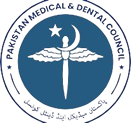Exploring Learning Preferences in Medical Education: An Investigative Study of Teachers and Students Utilizing the VARK Model
DOI:
https://doi.org/10.53708/hpej.v7i2.3469Keywords:
VARK model, learning preferences, medical education, educational strategies, cross-sectional study, gender differences, professional rolesAbstract
Introduction: Understanding the various learning preferences is pivotal for effective teaching strategies. The VARK model (Visual, Aural, Read/Write, Kinesthetic) sheds light on how individuals prefer to learn. This can significantly improve teaching methods, especially in the field of medical education.
Objective: To determine the learning preferences of medical tutors and students using the VARK model, aiming to inform the development of tailored teaching strategies that enhance engagement and learning outcomes.
Methods: A multicentered cross-sectional study was conducted which involved 231 participants, including doctors, nurses, physiotherapists, nutritionists, and non-medical teachers recruited through convenience sampling. Data collection was carried out via an online VARK questionnaire. This questionnaire identifies preferences for Visual, Aural, Read/Write, and Kinesthetic learning styles. Descriptive statistics and chi-square tests were used to analyze the data in SPSS version 25. It explored differences across various demographic groups as well.
Results: Unimodal learning preference was predominant (83.1%), with bimodal (15.6%) and trimodal (1.3%) being less common. Stratified analysis showed significant associations between experience levels and qualifications (p=0.00) and professional roles (p=0.00). However, learning modality preferences did not significantly differ with the experience level (p=0.58). An important finding was that more females preferred unimodal learning.
Conclusion: Unimodal learning preference is highly prevalent among medical tutors and students. Recognizing diverse learning styles is essential to tailor educational approaches. This will ultimately culminate in a desired futuristic healthcare system.
Keywords: Cross-Sectional Study, Medical Education, Nutritionists, Physical Therapists, Students.



